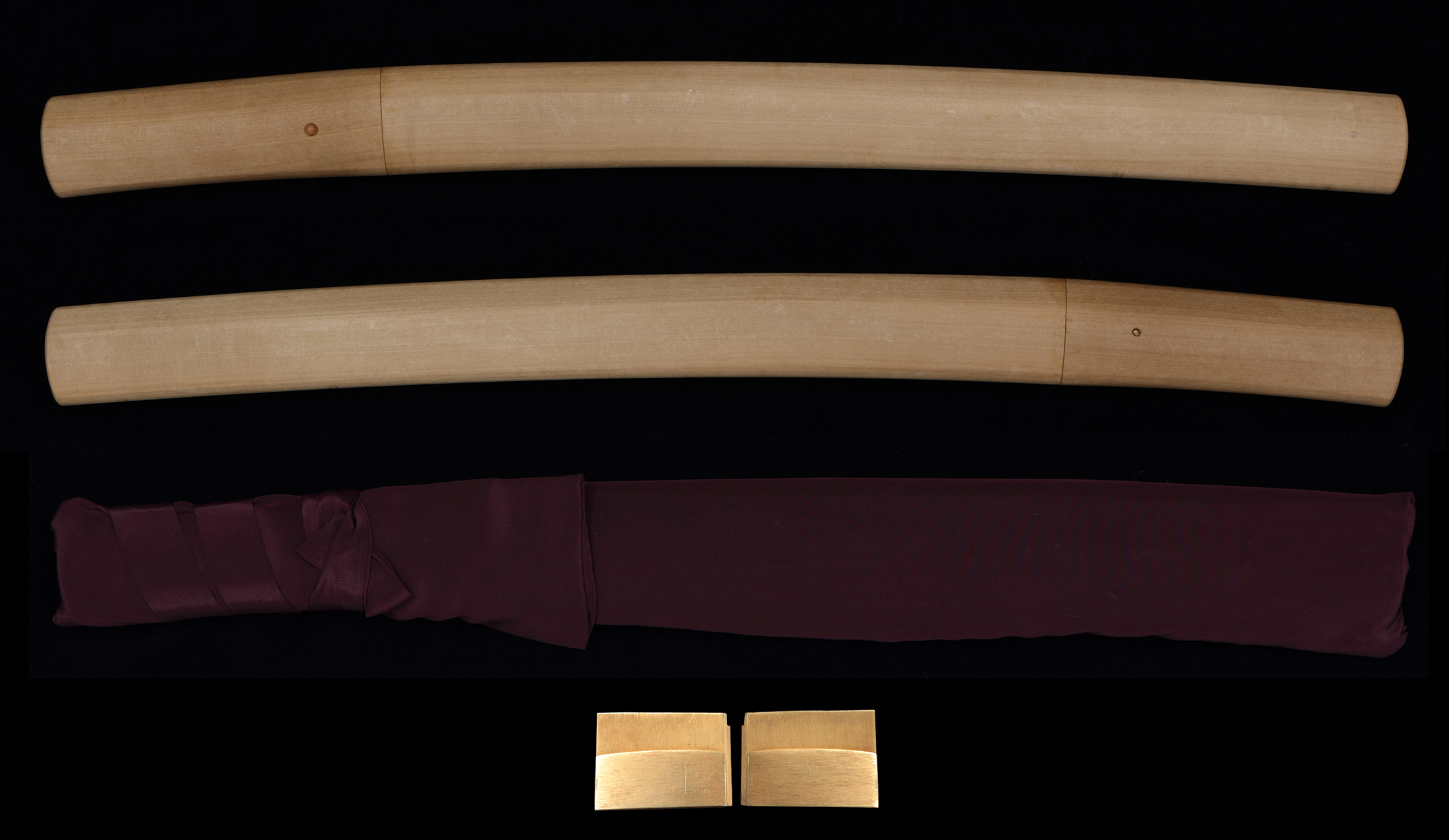[ Feature ]
Form : Hira-zukuri. Iori-mune. Mihaba is wide. Kasane is relatively thin. Saki-haba does not become so narrow. Saki-zori attached. Its lenght extended.
Nakago : Ubu. Yasurimes are suji-kais and keshô. Saki is kuri-jiri. One hole.
Jigane : Ko-itame-hada well grained. Masa attached. Utsuri appeared.
Hamon : Sakas-chô-ji-midare. Ashis and yôs appeared. Fine and long kin-sens, sunagashis, tobi-yakis and mune-yaki appeared.
Boushi : It runs in midare-komi. Flame shape.
Swordsmith YAMAGUCHI Kiyofusa was born in Iwate prefecture in Showa 7(1932). His name is YAMAGUCHI Takeshi actually. He learned swords making under SUMITANI Masamine, a living national treasure. In Shôwa 44(1969), he earned swords creation permit, became independent and established his workshop at Morioka city, Iwate prefecture. In Shôwa 45(1970), he won a prize at 6th newly created Japanese swords exhibition. Then, he was honored with Mainichi shinbun prize, Prince Takamatsu-no-miya prize, chairman of NBTHK prize and other many top prizes. In Shôwa 61(1986), he won the Kunzan prize. In same year, he became qualified for an exemption of examination.
This sword has magnific and wide mihaba, extended length form. Nakago has been packaged into relatively short length. Hamon pattern has been tempered saka--chôji-midare, which appeared ashis and yôs. It seemed that he took criteria on Aoe school in Nan-bokuchô period. It can be appreciatde the path of effort searching his original ground. On well grained jingane, something like shadow of hamon, very complicated shape utsuris come to appear. It is the quality of being visionary.
[ Conditions ]
It has just polished this year, first year of Reiwa "令和". So excellent.




